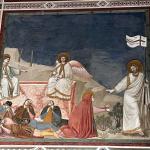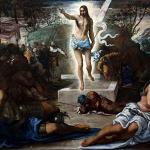INTRODUCTION
If “gift” has become a major category of recent thought, it is largely because of the influence of anthropology. Marcel Mauss’ The Gift: The Form and Reason for Exchange in Archaic Societies is the single most important work in this regard, and we’ll spend some time examining Mauss’ work later in the term. For now, we will set some of the context for Mauss by briefly tracing the rise of cultural anthropology, the specific influences on Mauss’ work (Durkheim mainly), and the use of Mauss’ work in the rise of structural anthropology (Levi-Strauss) and Structuralism more generally. This will lead us directly into consideration of “post-modernism,” which, in France at least, begins its life in reaction to Structuralism.
RISE OF ANTHROPOLOGY
Anthropology consists of a number of sub-disciplines (physical anthropology, eg), but we will focus on cultural anthropology. Cultural anthropology differs from other social sciences in several respects. First, its main concern is with “culture,” classically defined by E.B. Tylor (1832-1917) as “that complex whole which includes knowledge, belief, art, morals, law, custom, and any other capabilities and habits acquired by man as a member of society.” Thus, its concerns are holistic, attempting to view and examine the whole “way of life” and “way of belief” of a group of people, rather than attending merely to the use of power (political science) or to problems of social structures and relations (sociology). Political and social issues are by no means ignored in anthropological studies, but they are seen in a larger context of ritual, symbol, meaning, belief, and so forth. (In this respect, it only a slight exaggeration to say that we are all anthropologists now.)
Second, to attempt to an entire culture as an integrated whole – where the rituals are linked to the politics and both are linked to social networks – many cultural anthropologists focus attention on small-scale societies, primitive tribal cultures, rather than on the much more complex industrialized societies of the West. Some anthropologists (Margaret Mead) have operated on primitivist assumptions, and held up the simplicity of tribal cultures as a standard to judge and condemn the West. More recently, anthropological questions and methods have been turned toward modern societies, and especially in postmodern sociology cultural issues have come to the forefront.
Third, by the twentieth century, anthropology developed distinctive methods of investigation, focusing on field study or “ethnography.” Though some of the earliest anthropologically oriented thinkers (known as “ethnologists”) did not do field world, basing their theories on information collected from others (JG Frazer, eg), field work is now a standard part of the training and a basic method of cultural anthropology. An anthropologist becomes “embedded” in a culture, observing and recording his findings while also (frequently) participating in the culture’s rituals, practices, habits, food, clothing, etc.
Of the many intellectual and historical currents that shaped the rise of cultural anthropology, we can identify three: Enlightenment, evolution, and colonialism. First, the Enlightenment planted the seeds of the social science to giving attention to studies of human behavior and human society, and particularly to comparative studies (like Montesquieu’s Spirit of the Laws). Nineteenth-century evolutionary theory encouraged the study of “natural history,” which examined both the language and habits of tribal societies and the natural environment of the tribes. Evolution also often provided a grand framework for anthropological theory; many assumed that all cultures pass through the same evolutionary process, beginning with tribal societies and gradually becoming more complex and differentiated. Students of tribal culture thus were students of the pre-history of higher, more civilized societies. Finally, European colonialism provided both the opportunity and the impetus to study non-Western societies. Europeans had to study the language and customs of colonized peoples in order to rule them effectively, and the spread of colonies also enabled students interested in natural history and anthropology to have access to tribal societies.
DURKHEIM
Emile Durkheim (1858-1917) was one of the most important figures in the development of modern sociology and anthropology. He was particularly concerned with the modern problem of social solidarity: How can a society or nation remain unified when the traditional social glues – religion and ethnic homogeneity – no longer pertained? In trying to answer this question, Durkheim developed several particularly important concepts.
First, unlike some other sociologists and ethnologists, Durkheim was most interested in the “synchronic” rather than the “diachronic” analysis of societies. Societies are studied not through time, but as integrated systems. This emphasis on the synchronic is an important factor in the context from which Structuralism later develops.
Second, he operated in what has come to be called a “functionalist” framework – social phenomena are examined in terms of their role in maintaining the health and solidarity of the society. Functionalists don’t so much ask, “what does this phenomenon mean?” as “what does it contribute to the society as a whole?” As Durkheim explains in his Rules of Sociological Method, “When . . . the explanation of a social phenomenon is undertaken, we must seek separately the efficient cause which produces it and the function it fulfills. We use the word ‘function,’ in preference to ‘end’ or ‘purpose,’ precisely because social phenomena do not generally exist for the useful results they produce. We must determine whether there is a correspondence between the fact under consideration and the general needs of the social organism, and in what this correspondence consists, without occupying ourselves with whether it has been intentional or not.”
Third, in contrast to Max Weber, whose theories were developed within a framework of “methodological individualism,” Durkheim developed the idea of “social fact” (derived from the counter-Enlightenment philosopher de Bonald), emphasizing the objectivity of social phenomenon, that social phenomenon are not dependent upon the choices and actions of individuals, and that social facts must be explained in terms of other social facts. Durkheim is not only interested in finding correlations and patterns in society; he is interested in explaining various realities of social life by reference to an ahistorical, pre-existing “social” reality.
Durkheim himself: “The determining cause of a social fact should be sought among the social facts preceding it and not among the states of individual consciousness.” For Durkheim, the realm of social facts is quite broad: “When I perform my duties as a brother, a husband or a citizen and carry out the commitments I have entered into, I fulfill obligations which are defined in law and custom and which are external to myself and my actions. Even when they conform to my own sentiments and when I feel their reality within me, that reality does not cease to be objective, for it is not I who have prescribed these duties; I have received them through education. Moreover, how often does it happen that we are ignorant of the details of the obligations that we must assume, and that, to know them, we must consult the legal code and its authorised interpreters! Similarly the believer has discovered from birth, ready fashioned, the beliefs and practices of his religious life; if they existed before he did, it foll
ows that they exist outside him. The system of signs that I employ to express my thoughts, the monetary system I use to pay my debts, the credit instruments I utilise in my commercial relationships, the practices I follow in my profession, etc., all function independently of the use I make of them. Considering in turn each member of society, the foregoing remarks can be repeated for each single one of them. Thus there are ways of acting, thinking and feeling which possess the remarkable property of existing outside the consciousness of the individual.”
The clearest evidence of the objectivity of social facts comes out when one tries to resist them. Then, social facts are experienced as coercive. “Undoubtedly when I conform to them of my own free will, this coercion is not felt or felt hardly at all, since it is unnecessary. None the less it is intrinsically a characteristic of these facts; the proof of this is that it asserts itself as soon as I try to resist. If I attempt to violate the rules of law they react against me so as to forestall my action, if there is still time. Alternatively, they annul it or make my action conform to the norm if it is already accomplished but capable of being reversed; or they cause me to pay the penalty for it if it is irreparable. If purely moral rules are at stake, the public conscience restricts any act which infringes them by the surveillance it exercises over the conduct of citizens and by the special punishments it has at its disposal. In other cases the constraint is less violent; nevertheless, it does not cease to exist. If I do not conform to ordinary conventions, if in my mode of dress I pay no heed to what is customary in my country and in my social class, the laughter I provoke, the social distance at which I am kept, produce, although in a more mitigated form, the same results as any real penalty. In other cases, although it may be indirect, constraint is no less effective. I am not forced to speak French with my compatriots, nor to use the legal currency, but it is impossible for me to do otherwise. If I tried to escape the necessity, my attempt would fail miserably. As an industrialist nothing prevents me from working with the processes and methods of the previous century, but if I do I will most certainly ruin myself. Even when in fact I can struggle free from these rules and successfully break them, it is never without being forced to fight against them. Even if in the end they are overcome, they make their constraining power sufficiently felt in the resistance that they afford. There is no innovator, even a fortunate one, whose ventures do not encounter opposition of this kind.”
Social facts are distinguishable from psychic facts or from natural facts: “they consist of manners of acting, thinking and feeling external to the individual, which are invested with a coercive power by virtue of which they exercise control over him. Consequently, since they consist of representations and actions, they cannot be confused with organic phenomena, nor with psychical phenomena, which have no existence save in and through the individual consciousness. Thus they constitute a new species and to them must be exclusively assigned the term social. It is appropriate, since it is clear that, not having the individual as their substratum, they can have none other than society, either political society in its entirety or one of the partial groups that it includes – religious denominations, political and literary schools, occupational corporations, etc. Moreover, it is for such as these alone that the term is fitting, for the word ‘social’ has the sole meaning of designating those phenomena which fall into none of the categories of facts already constituted and labelled. They are consequently the proper field of sociology. It is true that this word ‘constraint’, in terms of which we define them, is in danger of infuriating those who zealously uphold out-and-out individualism. Since they maintain that the individual is completely autonomous, it seems to them that he is diminished every time he is made aware that he is not dependent on himself alone. Yet since it is indisputable today that most of our ideas and tendencies are not developed by ourselves, but come to us from outside, they can only penetrate us by imposing themselves upon us. This is all that our definition implies. Moreover, we know that all social constraints do not necessarily exclude the individual personality.”
Durkheim’s interest in the issue of social solidarity is evident in his distinction between simple and complex organizations. The former are based on the “mechanical solidarity” that comes when people do interchangeable tasks, everyone performing essentially the same tasks in the same way. The latter are based on “organic solidarity,” which arises from the recognition of difference within a society and recognition of the various complementary contributions that each member makes toward the society.
For Durkheim, religion is entirely a social reality, and the central sacred reality that organizes the “church” of any religion is the society itself. The social is the true object of worship. In the helpful summary by TH Eriksen and FS Nielsen, in his Elementary Forms of Religious Life Durkheim “attempts to grasp the meaning of ‘solidarity’ itself, of the very force that keeps society together. Solidarity, Durkheim argues, arises from collective representations – then as now a controversial term. These are symbolic ‘images’ or ‘models’ of social life that are shared by a group. Such ‘images’ develop through interpersonal relationships, but attain a supra-individual, objective character. They make up an all-embracing, virtual, ‘socially constructed’ reality that echoes Kant and Hegel, and which to the people who live in the society appear just as real as material world. But they are not objective images of this world. They are moral entities, with power over the emotions. Religion becomes an important object of inquiry for Durkheim, because it is here, more than anywhere else, that the emotional attachment of individuals to collective representations is established and strengthened. This attachment is primarily formed in ritual, in which religion is expressed through physical interaction and solidarity becomes a direct, bodily experience. Ritual hedges itself off from profane daily life, drawing a protective magic circle around its own, forbidden, sacred domain. This demarcation allows the experience of ritual to be intensified until an almost mystical union is achieved. Bringing the memory of this experience back into everyday life, we remember how the world truly is.”
In Durkheim’s own words, religion is “a unified set of beliefs and practices relative to sacred things, that is to say, things set apart and forbidden, – beliefs and practices which unite one single moral community – all those who adhere to them.” By studying totemic religions, Durkheim believed, he could isolate the most basic features of religion and social reality. In totemism, “there is a concrete and living reality” behind the totem, but it is “a system of ideas with which the individuals represent to themselves the society of which they are members.” Totems are “the outward and visible form of what we have called the totemic principle of god,” but totems are also “the symbol of a determined society or clan. It is its flag, . . . so if it is at once the symbol of god and of the society, is that not because the god and the society are only one? . . . The totemic principle can therefore be nothing else than the clan itself, personified and represented to the imagination under the visible form of the animal or vegetable which serves as totem.”
MAUSS, LEVI-STRAUSS, STRUCTURAL ANTHROPOLOGY, AND THE GIFT
Mauss takes anthropology in a somewhat different direction
from Durkheim, who was his uncle and collaborator on various projects. Social solidarity does not come, Mauss argued, through collective rituals that rehearse social solidarity, but through exchanges and reciprocity, through gift. More importantly, Mauss shifted the emphasis of anthropology from function to communication; or, perhaps more precisely, the exchanges that he described are functional because they are communicative. Gift exchanges communicated status as well as solidarity. Gift-giving is not only a way of establishing friendship and alliance but a way of putting the recipient into a subordinate position. Further, gift exchange gave Mauss a way to investigate not only mechanisms of social solidarity but mechanisms of social resistance and conflict. Bruce Thompson and Stephanie Galante of the University of California at Santa Cruz have suggested that Mauss came close to the later insight of Claude Levi-Strauss, who argued, in the words of Susan Sontag, “kinship relations, relations of economic and ceremonial exchange, and linguistic relations, are fundamentally of the same order . . . . All behavior is a language, a vocabulary and grammar of order; anthropology proves nothing about human nature except the need for order itself. There is no universal truth about the relations, say, between religion and social structure. There are only models showing the variability of one in relation to the other.”
Structuralism is one of the major intellectual movements of the twentieth century, inspired by the linguistic theories of Ferdinand de Saussure and applied in a range of academic disciplines. Our interest is to note how notions of gift, derived from the work of Mauss, entered the fabric of Structuralist thought.
First, though, a brief summary of some of the main emphases in Saussure’s work. Saussure was more interested in synchronic rather than diachronic studies of language – in the system of the language (which he described as “langue”) and the actual utterances of the language (which he described as “parole”). He attempted to explicate the “system” of language that underlies the specific statements made by speakers. Grammar describes the logic of the combinations of the linguistic items in a language. He argued that the relationship between the signified and the signified (which together make up the “sign”) is an arbitrary one. There is no necessary relation between the sounds we make, or the marks we put on a page, and the things to which those sounds and marks refer. Nor do words somehow “contain” the meaning that they communicate. Rather, the meaning of words and utterances in a particular language depends on relations of difference between various similar words in the language.
Saussure’s linguistic theories were applied to cultural anthropology in a couple of ways: First, cultural anthropologists, like linguists, explored the specific utterances of a culture (its habits, myths, rituals, etc) with a view to uncovering the fundamental cultural structure that gave rise to those “utterances.” Second, the specific cultural units are arbitrary, and can be combined in various ways, but within a particular culture there are analogies between the various social, symbolic, and other systems. As Clifford Geertz has put it, “in language the constituent units are from a semantic point of view arbitrary; and they are defined not in terms of their common properties but their differences, that is, by contrasting them in pairs . . . . One can even move between different levels of social reality–the exchange of women in marriage, the exchange of gifts in trade, the exchange of symbols in ritual–by demonstrating that the logical structures of the various institutions are, when considered as communications schemes, isomorphic.” In this description, it is evident that Mauss’ studies of exchange has provided a master metaphor for anthropological research. Not only goods, but symbols, people, and other things in a culture are “exchanged,” and those exchanges are communications between the members of the society. (Mary Douglas’s analysis of the abominations of Leviticus has a structuralist impulse: The meaning of the abominations does not lie in the habits of the animals themselves but in a grammar that establishes norms and forbids transgressions of norms.)
Claude Levi-Strauss, the most prominent of the structural anthropologists, combined the linguistic structuralism of Saussure with the sociology of Durkheim and Mauss to produce some of the basic conceptions of structural anthropology. In an appreciative introduction to Mauss’ work, Levi-Strauss notes that Mauss’ influence is not confined to anthropologists, but includes linguists, psychologists, historians of religion and orientalists.
Following Saussure, Levi-Strauss is interested in uncovering the underlying logic, the “grammar,” of cultural phenomena. At the center of Levi-Strauss’ theory is the distinction of nature and culture, which has many manifestations (eg, in distinctions between raw and cooked foods). But a key concern of Levi-Strauss’ theory is the “incest taboo,” the prohibition of marriage and sexuality within family boundaries. This is of interest to Levi-Strauss for several reasons. First, incest does not arise from nature; there is no evident natural reason that keeps you from marrying your sister in the way there is, say, a natural reason that keeps you from marrying your housecat. Incest is a cultural norm. Yet, second, the incest taboo in some form is well-nigh universal. Nearly every culture has some rules about who can and who cannot be married. Thus, incest appears to be something of a natural norm. This is a universal cultural norm, albeit expressed in hundreds of different ways; it is a natural social fact. For Levi-Strauss, incest prohibitions not only bridge nature and culture, but provide the foundation for human society, since the incest taboo forces members of one blood-family group to find partners in another blood-group. Society, and culture, is born in this transcendence of and departure from the blood family. Incest also requires a classification system, and classification is a basic human impulse (Levi-Strauss is drawing on a book by Durkheim and Mauss on classification systems).
Various cultural grammars function similarly, Levi-Strauss argues, because they are products of an unconscious structure in the brain. Our brains are hard-wired with certain basic differential concepts that manifest themselves in kinship, clothing customs, myths, and virtually every other aspect of social and cultural life. The three basic levels of exchange, communication, and classification pertain to women, goods, and ideas – kinship systems, economics, and myths/religions. Each of these systems has a structure, and can be examined, in Saussurean fashion, as kinds of language.
Terry Eagleton offers this description of Levi-Strauss’ analysis of myth: “Beneath the immense heterogeneity of myths were certain constant universal structures, to which any myth could be reduced. Myths were a kind of language: they could be broken down into individual units (‘mythemes’) which like the basic units of language (phonemes) acquired meaning only when combined together in particular ways. The rules which governed such combinations could be seen as a kind of grammar, a set of relations beneath the surface of the narrative which constituted the myth’s true ‘meaning’. These relations, Levi-Strauss considered, were inherent in the human mind itself, so that in studying a body of myth we are looking less at its narrative contents than at the universal mental operations which structure it. These mental operations, such as the making of binary oppositions, are in a way what myths are about: they are devices to think with, ways of classifying and organizing real
ity, and this, rather than the recounting of any particular tale, is their point. The same, Levi-Strauss believes, can be said of totemic and kinship systems, which are less social and religious institutions than networks of communication, codes which permit the transmission of ‘messages’. The mind which does all this thinking is not that of the individual subject: myths think themselves through people, rather than vice versa. They have no origin in a particular consciousness, and no particular end in view. One result of structuralism, then, is the ‘decentering’ of the individual subject, who is no longer to be regarded as the source or end of meaning. Myths have a quasi-objective collective existence, unfold their own ‘concrete logic’ with supreme disregard for the vagaries of individual thought, and reduce any particular consciousness to a mere function of themselves.”
The influence of Mauss on Levi-Strauss, and through him on Structuralism in general, is most evident in his discussion of kinship relationships. Beginning with the Maussian premise that reciprocity creates social relations binding the giver and the recipient, he argues that kinship systems are systems of exchange, systems of gift and reception. Exchange, he argued, is the fundamental and universal reality behind kinship systems, and the variety of different kinship systems are determined by the marriage rules in force. He states the fundamental premise of his treatment of kinship systems with a statement that clearly combines his Maussian and Saussurean sources: Marriage should be treated “as a kind of language, a set of processes permitting the establishment, between individuals and groups, of a certain type of communication. That the mediating factor, in this case, should be the women of the group, who are circulated between clans, lineages, or families, in place of the words of the group, which are circulated between individuals, does not at all change the fact that the essential aspect of the phenomenon is identical in both cases.”
The Wikipedia article on Levi-Strauss gives this helpful summary: “Marriage rules over time create social structures as marriages are primarily forged between groups and not just between the two individuals involved. When groups exchange women on a regular basis they marry together, with each marriage creating a debtor/creditor relationship which must be balanced through the ‘repayment’ of wives, either directly or in next generation. Levi-Strauss proposed that the initial motivation for the exchange of women was the incest taboo, which he deemed to be the beginning and essence of culture as it was the first rule to check natural impulses; and secondarily the sexual division of labour. The former, by prescribing exogamy, creates a distinction between marriageable and tabooed women and thus necessitates a search for women outside one’s own kin group (‘marry out or die out’), which fosters exchange relationships with other groups; the latter creates a need for women to do ‘women’s tasks.’ By necessitating wife-exchange arrangements, exogamy therefore promotes inter-group alliances and serves to form structures of social networks.”















